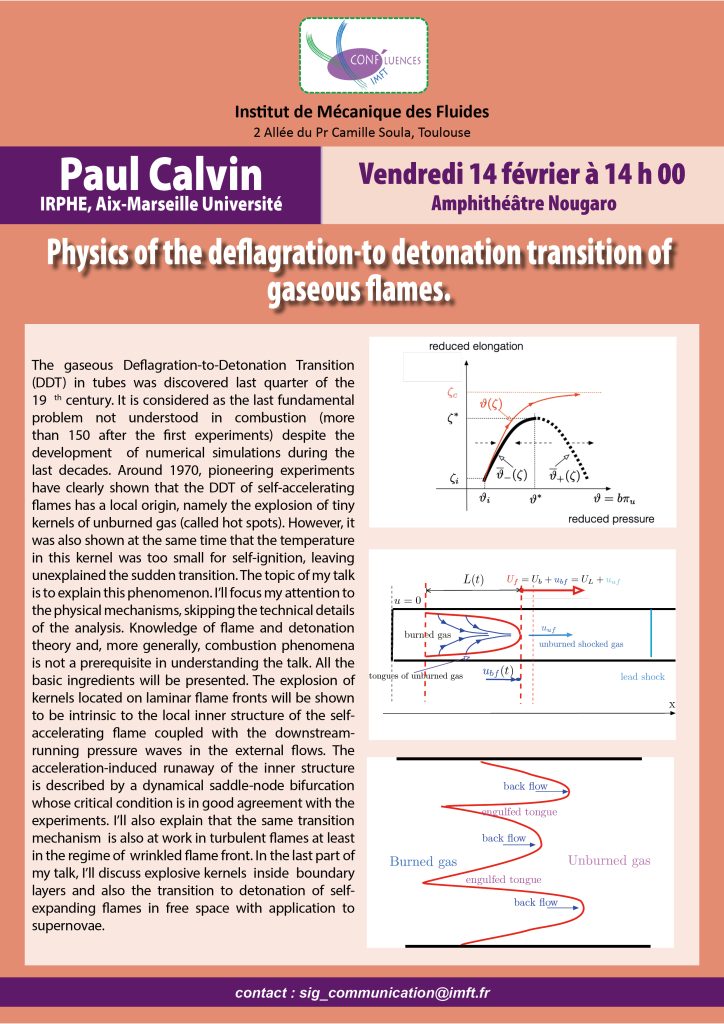Physics of the deflagration-to detonation transition of gaseous flames.
Conf’luence Paul Calvin
IRPHE, Aix-Marseille Université
Vendredi 14 février à 14 h 00 • Amphithéâtre Nougaro
The gaseous Deflagration-to-Detonation Transition (DDT) in tubes was discovered last quarter of the 19 th century. It is considered as the last fundamental problem not understood in combustion (more than 150 after the first experiments) despite the development of numerical simulations during the last decades. Around 1970, pioneering experiments have clearly shown that the DDT of self-accelerating flames has a local origin, namely the explosion of tiny kernels of unburned gas (called hot spots). However, it was also shown at the same time that the temperature in this kernel was too small for self-ignition, leaving unexplained the sudden transition. The topic of my talk is to explain this phenomenon. I’ll focus my attention to the physical mechanisms, skipping the technical details of the analysis. Knowledge of flame and detonation theory and, more generally, combustion phenomena is not a prerequisite in understanding the talk. All the basic ingredients will be presented. The explosion of kernels located on laminar flame fronts will be shown to be intrinsic to the local inner structure of the self-accelerating flame coupled with the downstream-running pressure waves in the external flows. The acceleration-induced runaway of the inner structure is described by a dynamical saddle-node bifurcation whose critical condition is in good agreement with the experiments. I’ll also explain that the same transition mechanism is also at work in turbulent flames at least in the regime of wrinkled flame front. In the last part of my talk, I’ll discuss explosive kernels inside boundary layers and also the transition to detonation of self-expanding flames in free space with application to supernovae.

